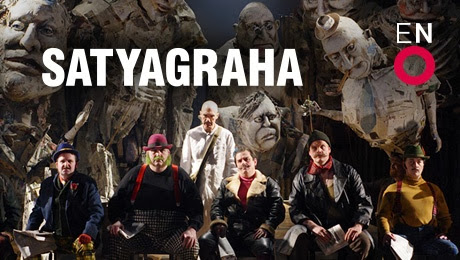Timely Intensity: Glass' Satyagraha at the English National Opera

Though I am familiar with Philip Glass' musical style and his immense impact on the world of opera and classical music at large, I have never viewed or attended a performance of one of his operas and was quite excited to do so. This production is shared by several opera houses, including the Metropolitan Opera, and is quite excellent. While I thought some of the typical Glass musical elements could have been pushed even a bit further here, the performance was quite good and, of course, mesmeric. This performance was given the day after the death of Nelson Mandela. Someone took the stage before the performance began and lead a one minute (really two minutes) standing period moment of silence. The trifecta of Gandhi on stage singing, Martin Luther King on stage acting, and Mandela in our minds was reflectively poignant. General information & synopsis: http://en.wikipedia.org/wiki/Satyagraha_(opera) Satyagraha | Philip Glass Credits: Director | Phelim McDermott As


